PEDIATRIC NURSING > EXAM > NR602 PEDIATRIC MIDTERM NEWEST TEST EXAM STUDY SET 2025/2026 COMPLETE STUDY QUESTIONS WITH CORRECT A (All)
NR602 PEDIATRIC MIDTERM NEWEST TEST EXAM STUDY SET 2025/2026 COMPLETE STUDY QUESTIONS WITH CORRECT ANSWERS GUARANTEED PASS | RATED A+
Document Content and Description Below
A 14-year-old female has menometrorrhagia with moderate increase in menstrual flow and irregular periods. Her hemoglobin is 13.1 g/dL. How will this be managed? Iron supplementation and prostaglandin... inhibitors One OCP twice daily for 3 to 4 days and then daily Progestin every day for 10 to 14 days Referral to a pediatric gynecologist for treatment - Answer>>> ANS: A This patient has mild AUB and may be managed by observation and reassurance along with iron to prevent anemia and prostaglandin inhibitors to reduce heavy bleeding. Patients with moderate AUB may be prescribed OCPs or progestins. Referral to a gynecologist is warranted with severe AUB. The parents of a pre-pubertal female who is on the local swim team tell the primary care pediatric nurse practitioner that their daughter wants to begin a strength training program to help improve her swimming ability. What will the nurse practitioner recommend? Avoiding strength training programs until after puberty to minimize the risk for injury Enrolling their daughter in a program that uses fixed weight machines or resistance bands Having their daughter participate in weight training 4 or 5 times each week for maximum effect Making sure that their daughter begins with the greatest weight tolerable using lower repetitions - Answer>>> ANS: B Fixed weights or resistance bands are recommended for pre-pubertal youth to help prevent injury. Strength training prior to menarche helps to strengthen long bones and is considered beneficial. Weight training should be 2 to 3 times weekly with a day in between sessions. Initially, youth should begin with a low number of sets and low intensity. An 18-month-old child has a 1-day history of intermittent, cramping abdominal pain with non-bilious vomiting. The child is observed to scream and draw up his legs during pain episodes and becomes lethargic in between. The primary care pediatric nurse practitioner notes a small amount of bloody, mucous stool in the diaper. What is the most likely diagnosis? Appendicitis Gastroenteritis Intussusception Testicular torsion - Answer>>> ANS: C Intussusception is characterized by intermittent pain associated with drawing up the legs, "currant jelly" stools, and lethargy in between episodes. Appendicitis is characterized by pain localizing to the RLQ and is not intermittent. Gastroenteritis is likely when vomiting precedes symptoms of pain or discomfort. Testicular torsion involves the testicles and thus has different physical findings and would not be accompanied with bloody stools. A school-age child has several annular lesions on the abdomen characterized by central clearing with scaly, red borders. What is the first step in managing this condition? Fluoresce the lesions with a Wood's lamp. Obtain fungal cultures of the lesions. Perform KOH-treated scrapings of the lesion borders. Treat empirically with antifungal cream. - Answer>>> ANS: D Unless the diagnosis is questionable, or if treatment failure occurs, tinea corporis is treated empirically with topical antifungal creams; therefore, it is not necessary to fluoresce the lesions, culture the lesions, or complete KOH testing of scrapings as an initial management step. A child who has been taking antibiotics is brought to the clinic with a rash. The parent reports that the child had a fever associated with what looked like sunburn and now has "blisters" all over. A physical examination shows coalescent target lesions and widespread bullae and areas of peeled skin revealing moist, red surfaces. What will the primary care pediatric nurse practitioner do? Consult with a pediatric intensivist for admission to a pediatric intensive care unit. Order oral acyclovir 20 mg/kg/day in two doses for 6 to 12 months. Prescribe systemic antihistamines and antimicrobial medications as prophylaxis. Recommend analgesics, cool compresses, and oral antihistamines for comfort. - Answer>>> ANS: A This child has symptoms consistent with toxic epidermal necrolysis, which is potentially life-threatening. Children with symptoms should be admitted to the PICU for management. The other options are treatments for erythema multiforme, a more benign, viral-induced rash. Oral acyclovir is given when herpes simplex infection is possible. A [Show More]
Last updated: 2 weeks ago
Preview 1 out of 134 pages
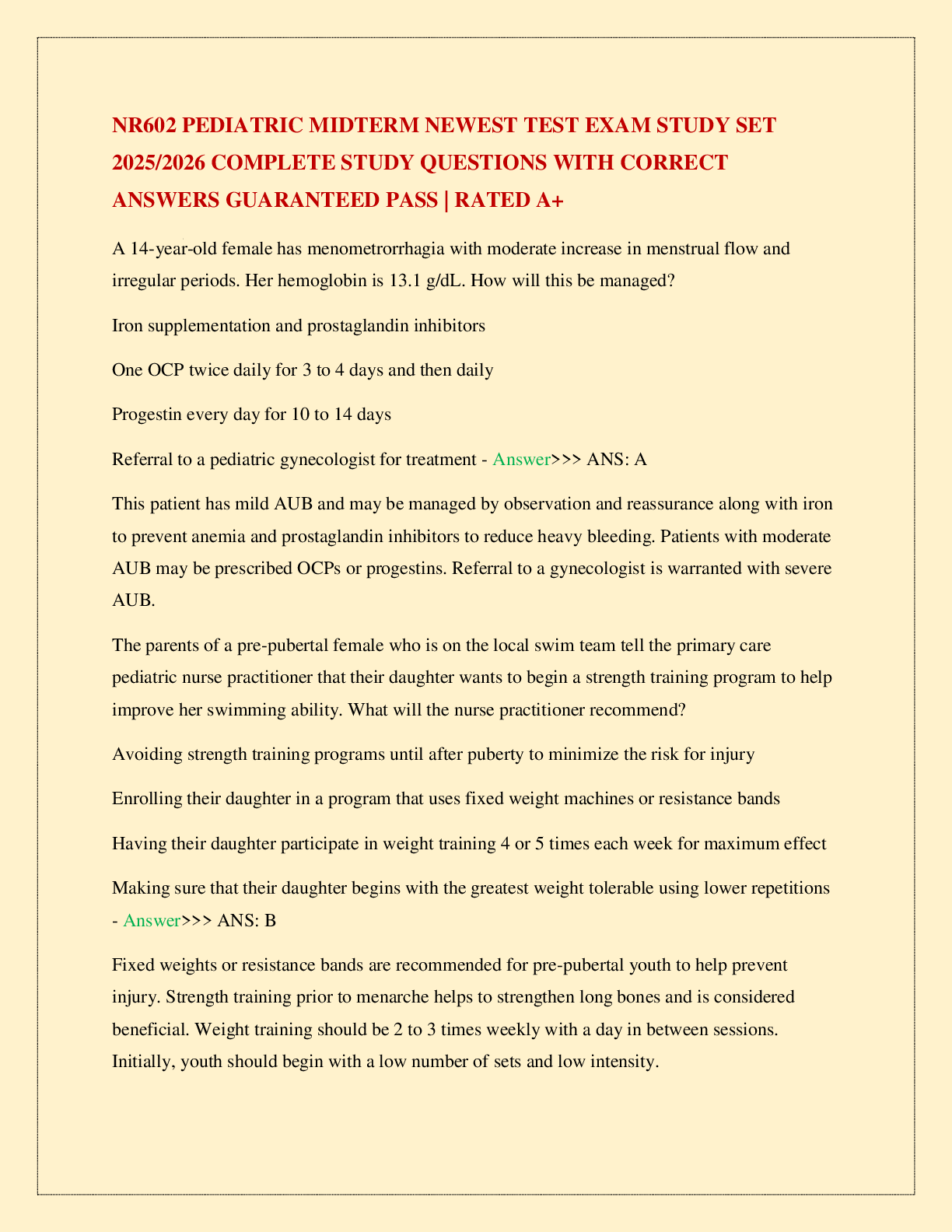
Buy this document to get the full access instantly
Instant Download Access after purchase
Buy NowInstant download
We Accept:

Reviews( 0 )
$17.00
Can't find what you want? Try our AI powered Search
Document information
Connected school, study & course
About the document
Uploaded On
Jul 09, 2025
Number of pages
134
Written in
Additional information
This document has been written for:
Uploaded
Jul 09, 2025
Downloads
0
Views
12

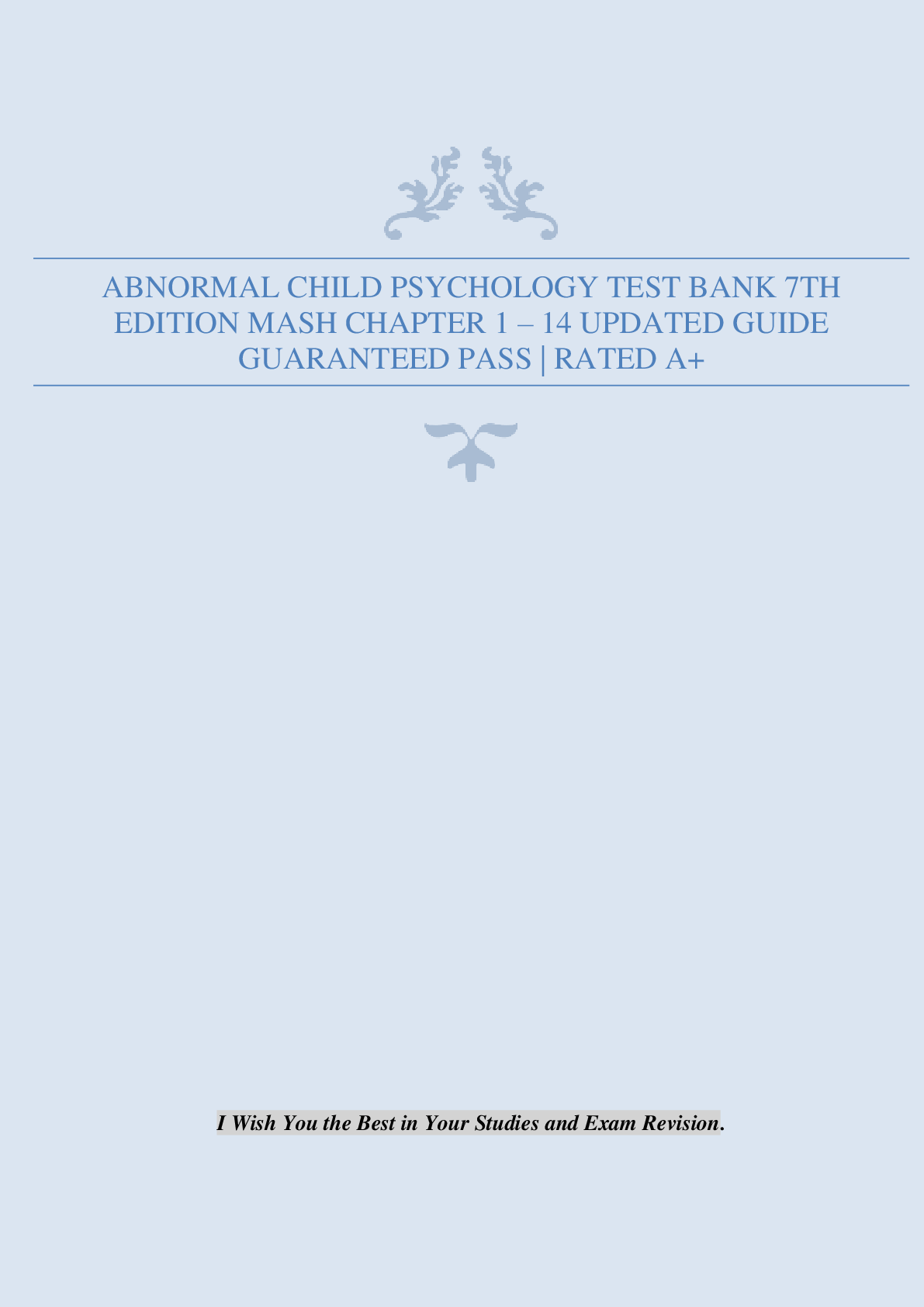
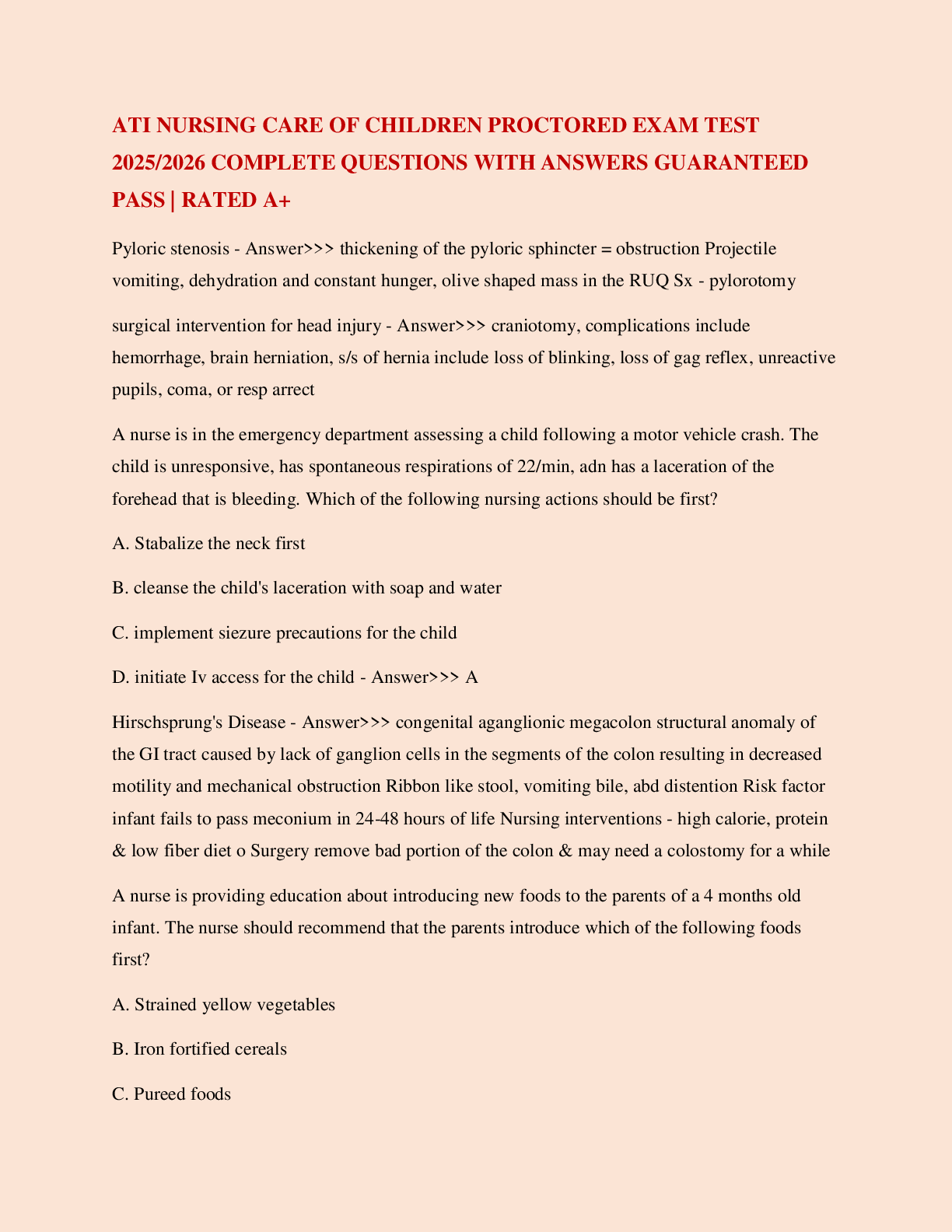

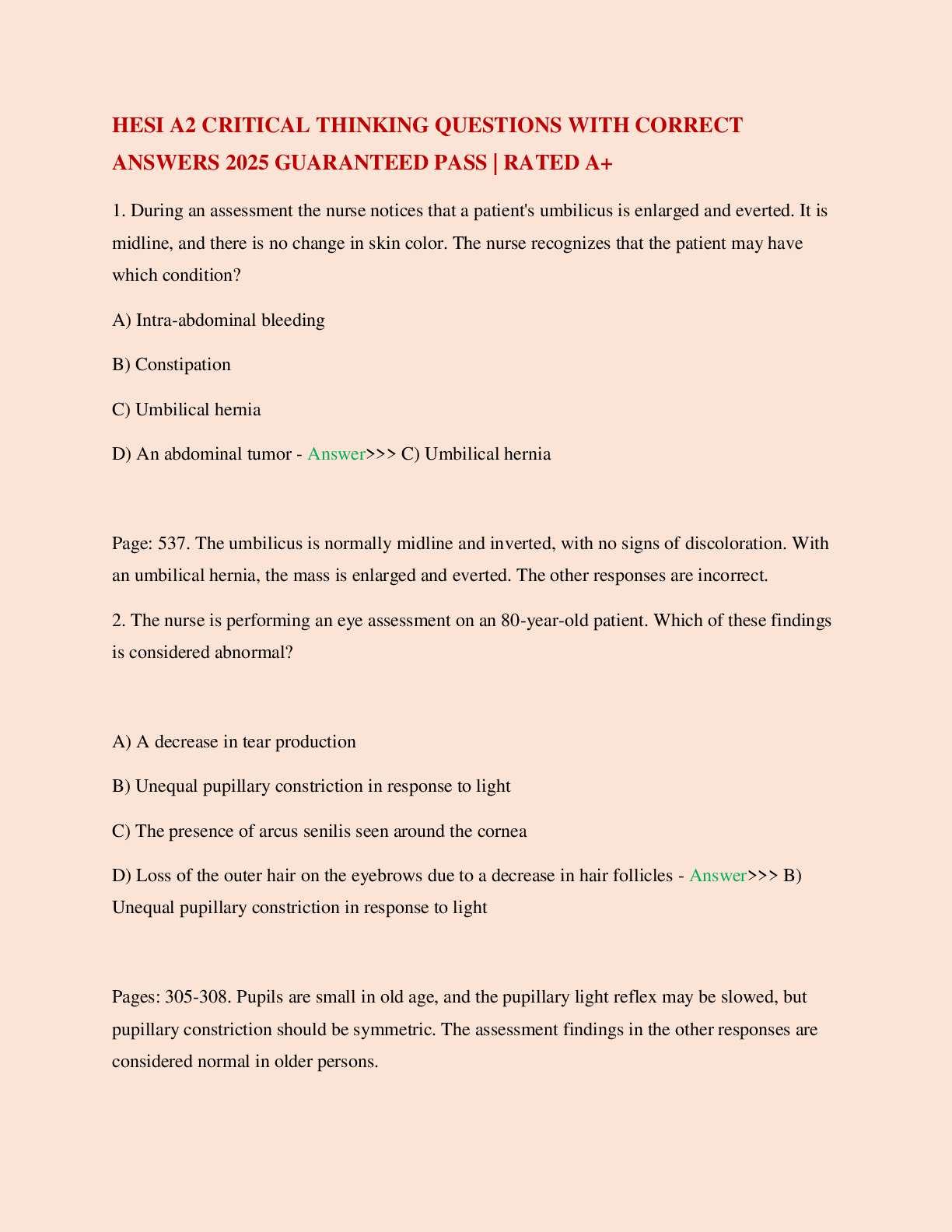
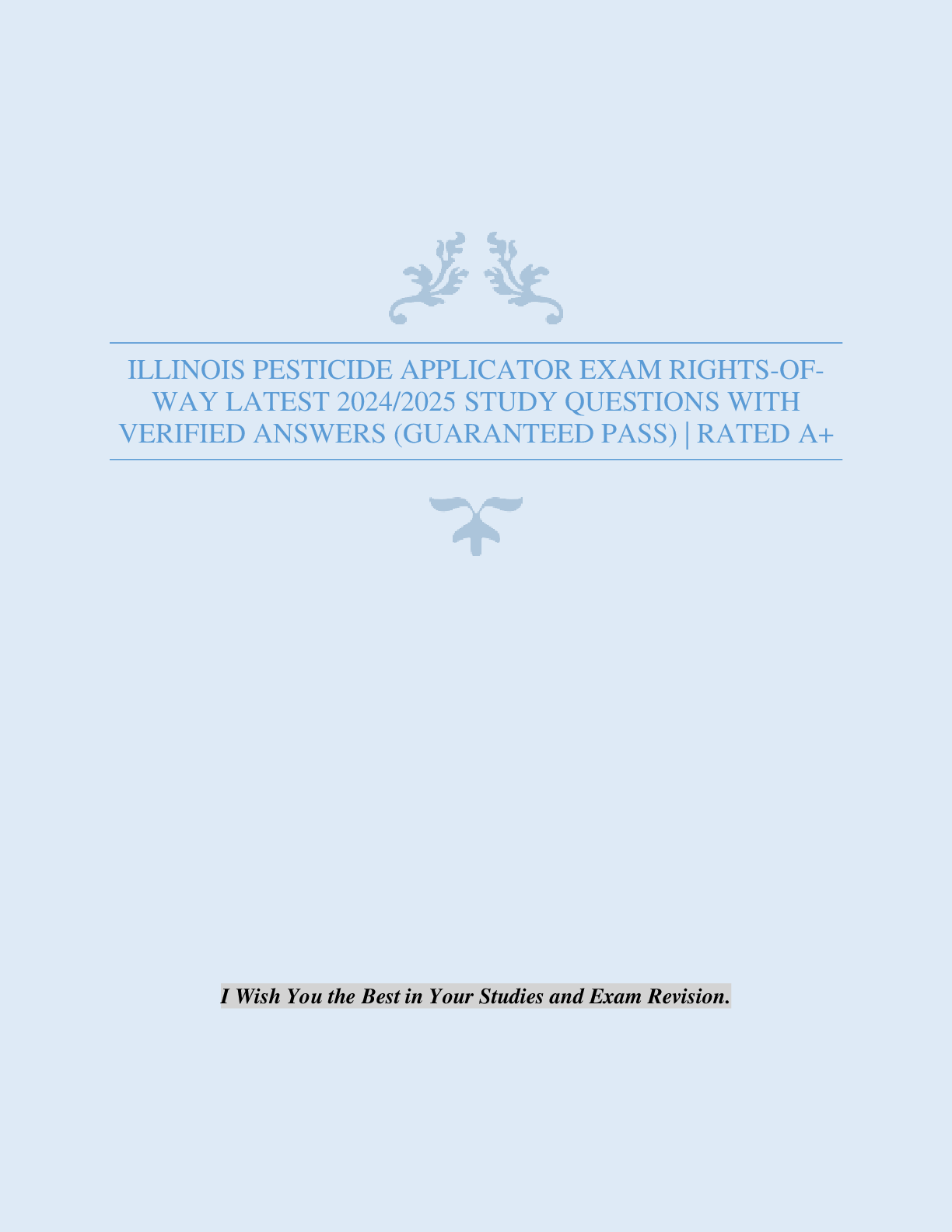

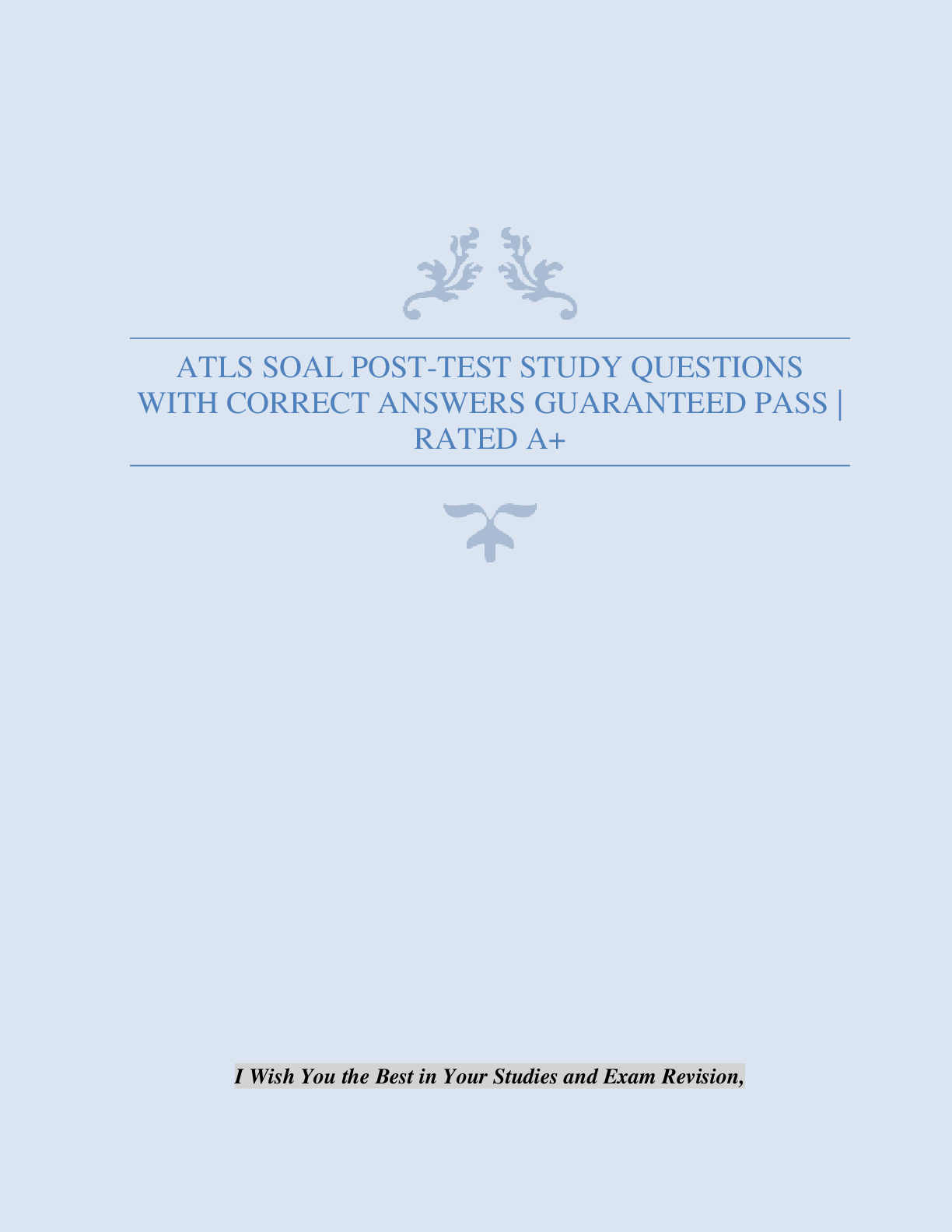
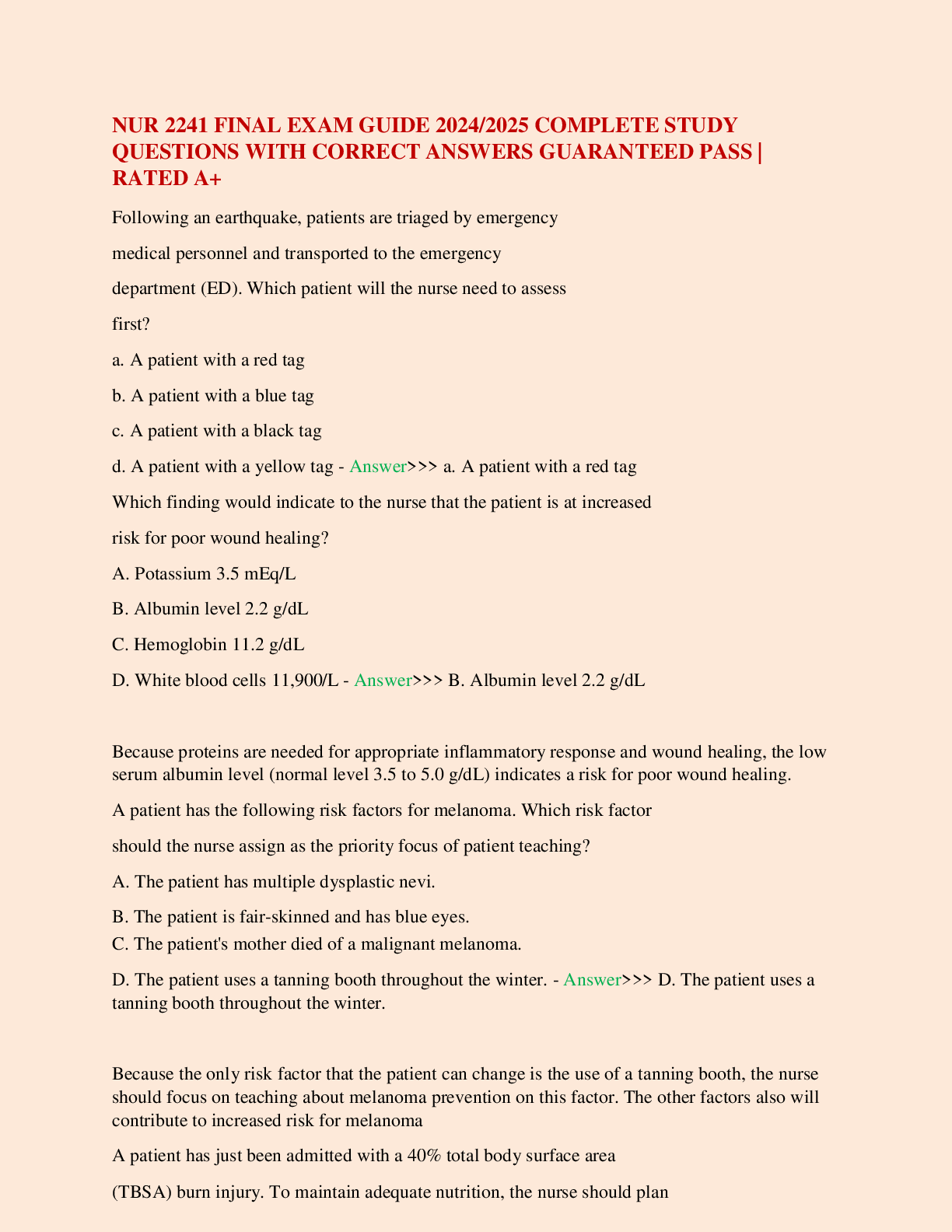
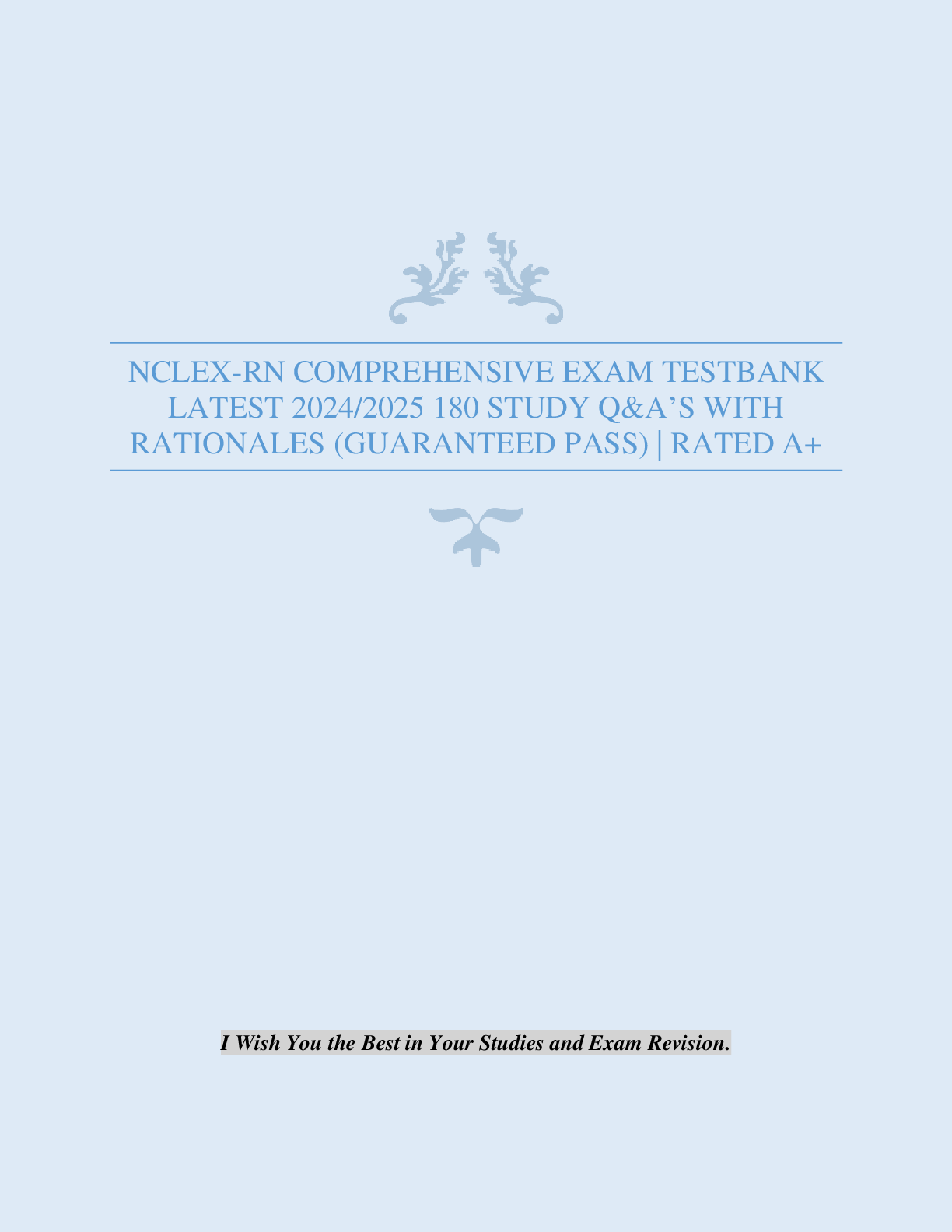
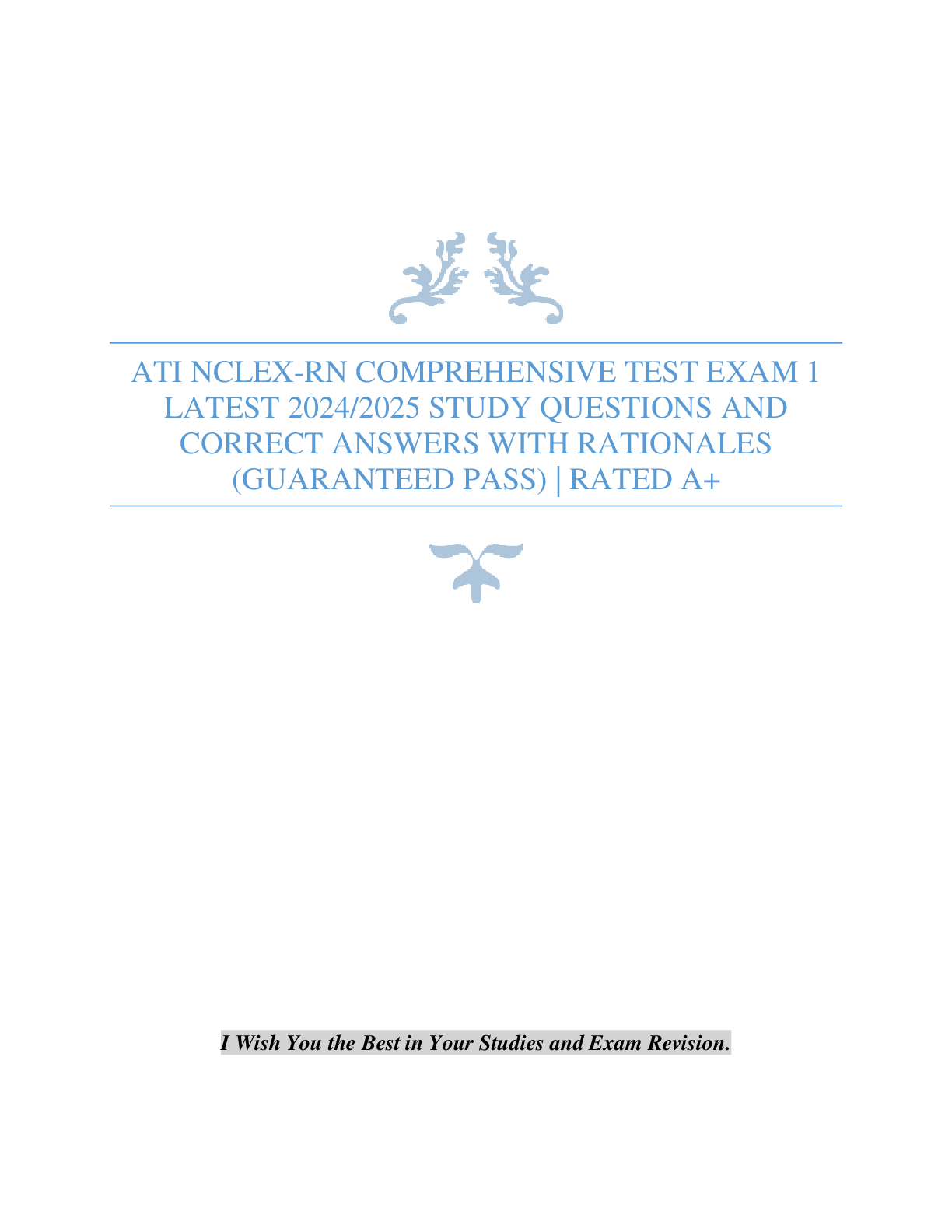
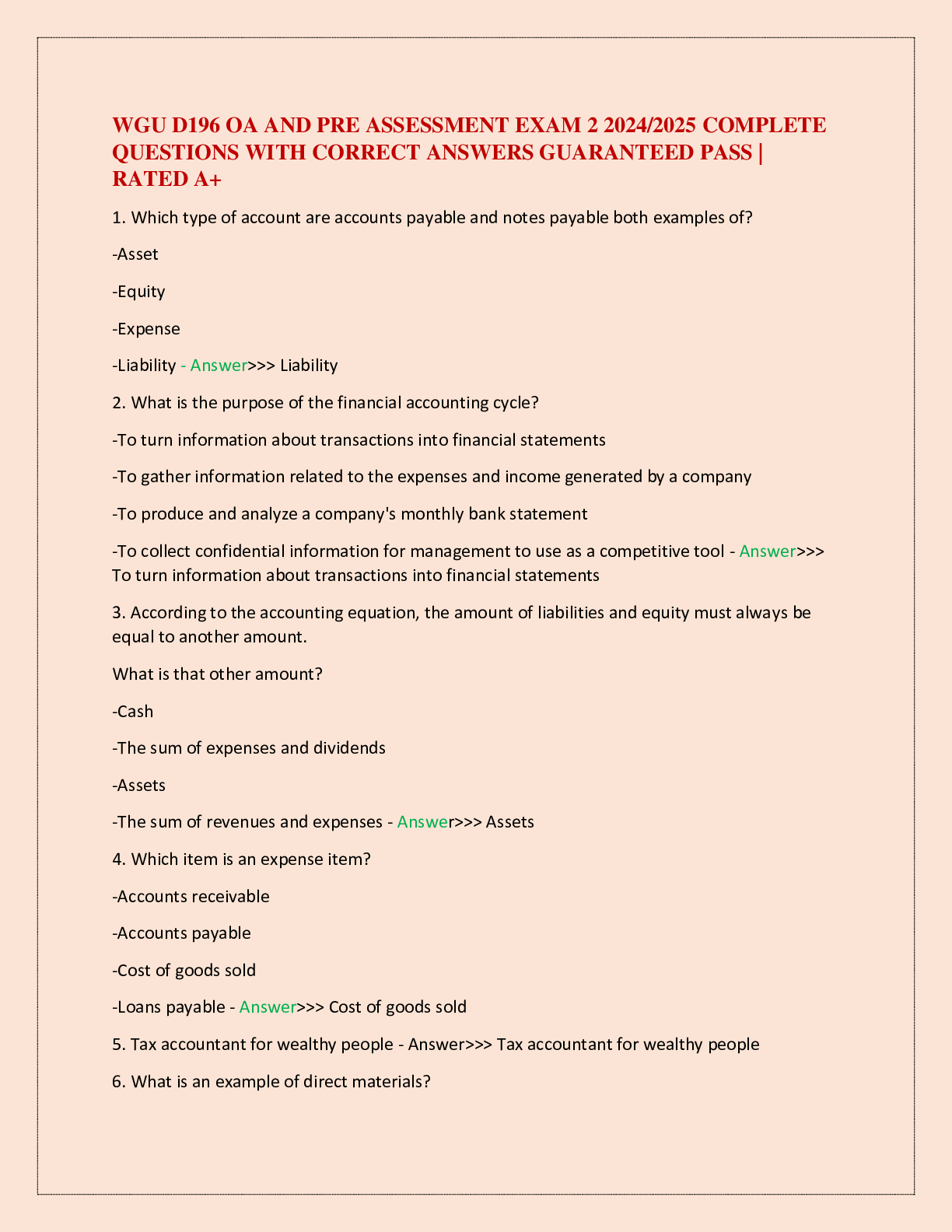

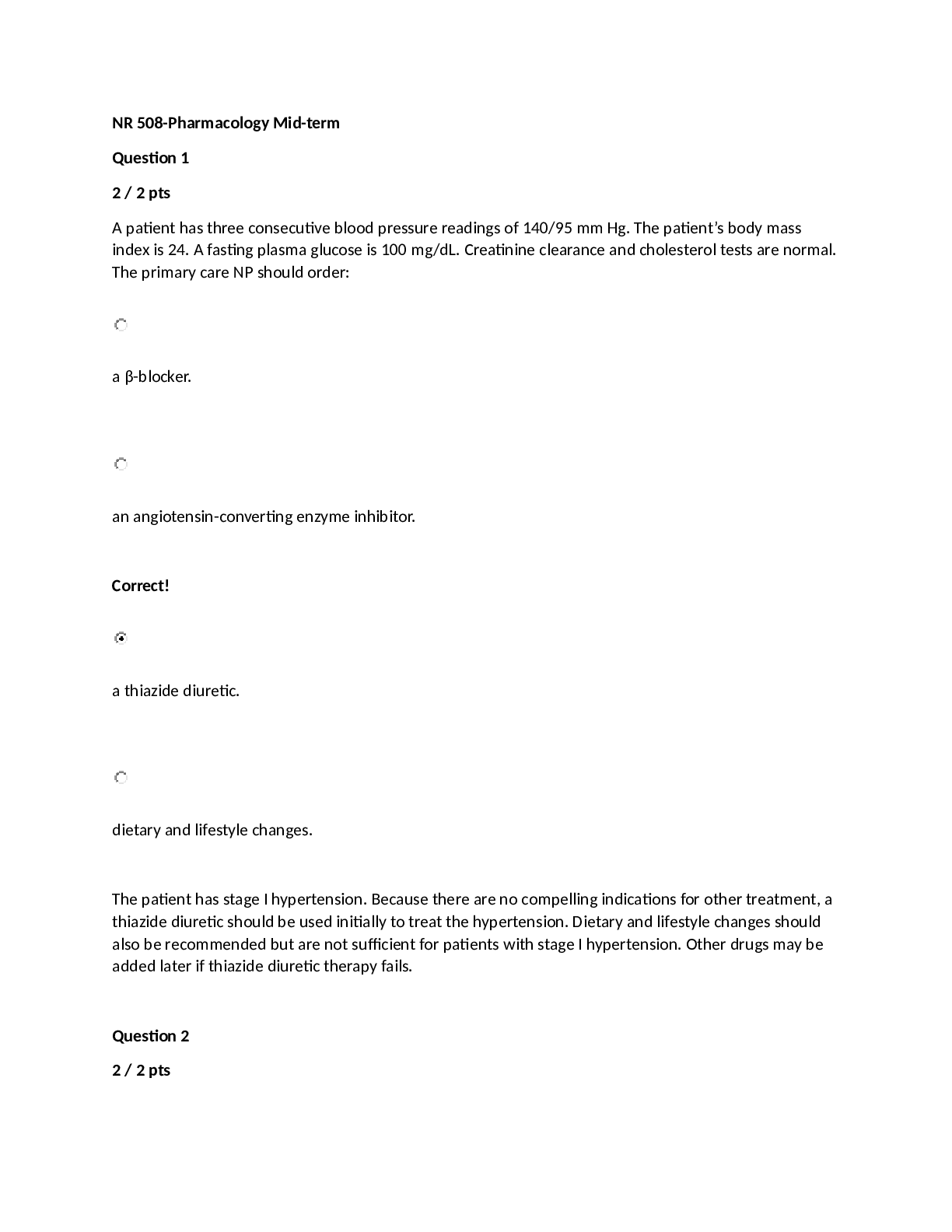





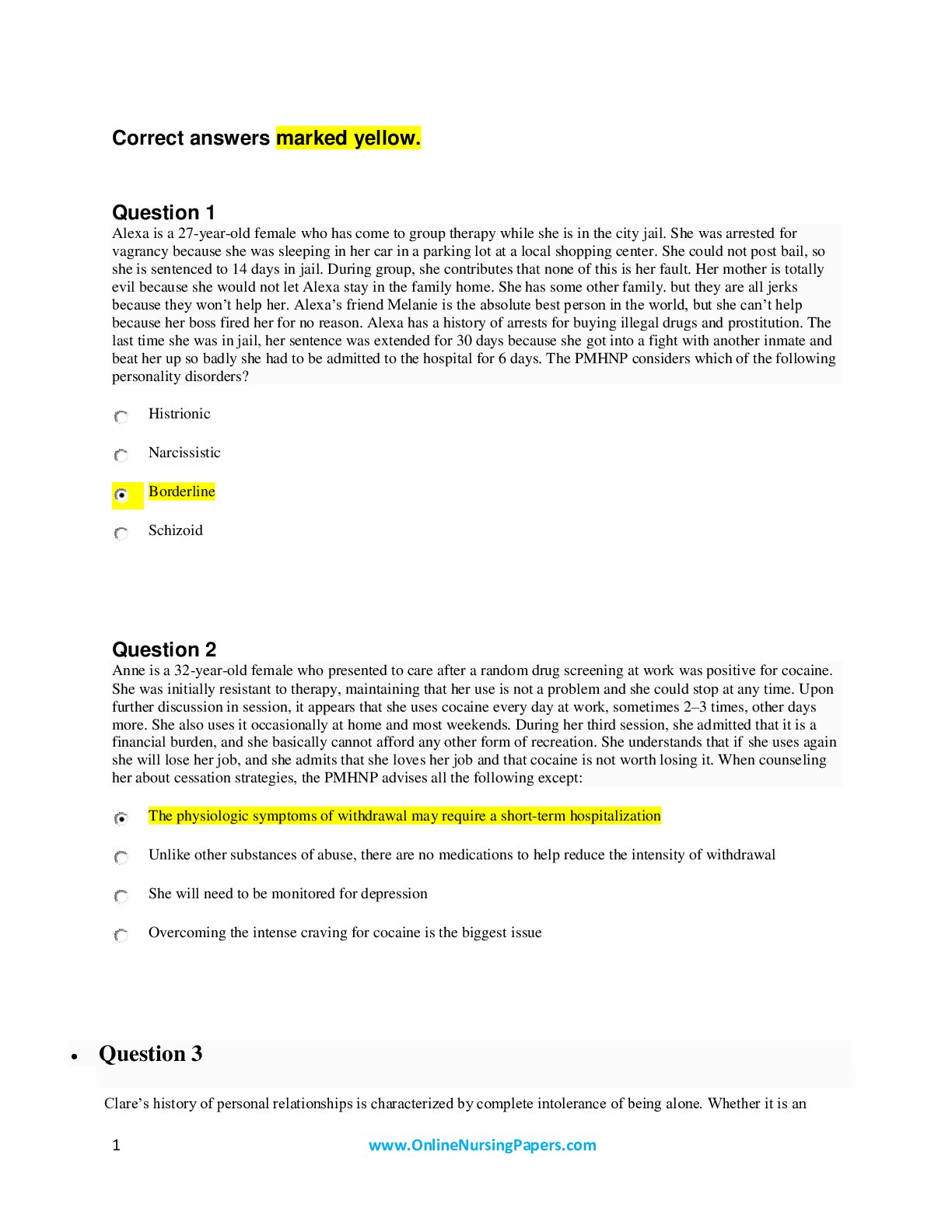
.png)


.png)

